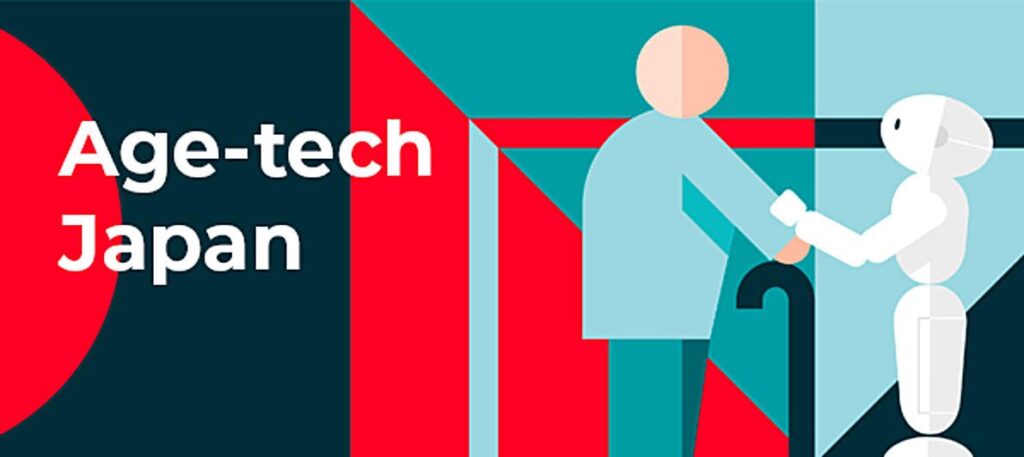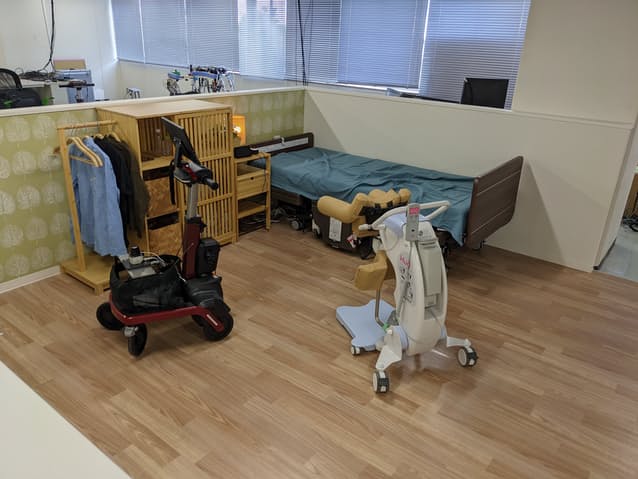
Age-tech in the News…
<Infrastructure>
When addressing the large-scale, multi-faceted challenges involving rapid aging, society, and healthcare systems, one of the most important success factors in innovating new solutions (and making them stick!) is cooperation and collaboration between different players from both private and public sectors.
Universities and city and regional governments play an important role in forging ahead with ecosystem exploration and development that can make a big contribution to improvements overall. When the private sector is involved, even better!
Here, two projects show glimmers of how Japan is proceeding. There is sure to be more of this type of activity going forward!

Tohoku University’s Aobayama Living Lab opened earlier this year at its Aobayama Campus in Sendai City, with a mission to develop and test nursing care robotics technologies for caregiving in replicated living environments (i.e., nursing homes, bathrooms, and toilets). The Lab will also allow visitors to test the functionality of the robots.
Equipped with a gait-assist robot from RT.Works (Osaka City) and an electric wheelchair from WHILL (Shinagawa, Tokyo), the 250-square-meter Living Lab has multiple robots and sensor systems that work together to encourage the creation of a system for caregiving.
The project is part of the Ministry of Health, Labor and Welfare’s project to develop and promote nursing care robots, and is one of eight Living Labs in Japan. It is expected to be used not only by Tohoku University personnel and collaborating researchers, but also by a wide range of people, including companies wishing to test the robots they develop, along with nursing care facilities residents who use the equipment.
Tohoku University envisions that robots equipped with artificial intelligence (AI) will be a normal part of the infrastructure by 2050, and has stated that it will be involved in a demonstration project at nursing care facilities by 2030, making the Living Lab a base for strengthening development.
The facility is used as a base for the ‘Adaptable AI Robots for Creating a Vibrant Society’, an R&D project under Goal 3 of the ‘Moonshot R&D Program’ (see link below for further details).
Moonshot R&D Program (ENG): https://www8.cao.go.jp/cstp/english/moonshot/target_en.html
Moonshot R&D Goals (ENG): https://www.jst.go.jp/moonshot/en/about.html
At the same time, as one of the Living Labs under the Ministry of Health, Labor and Welfare’s “Platform Project for the Development, Demonstration and Dissemination of Nursing Care Robots”, evaluation and effectiveness of nursing care robots will be conducted.
Osaka Prefecture’s “2nd Osaka Social Problem Solving Fund” was established in 2017 to support the growth of businesses that solve administrative and social issues in Osaka Prefecture. The first fund invested in 25 venture companies, providing financial resources to businesses addressing a range of social issues (i.e., ‘super-aging society’, ‘low birthrate x aging society’, ‘child-rearing’, and ‘education’.) The overall aim is to accelerate the resolution of these social issues for the realization of a more livable society.
The fund works in collaboration with the Japan Finance Corporation, the Osaka Prefectural Government, and the Osaka Bureau of Industry. JFC will reportedly consider co-financing in conjunction with the Fund’s investment to help businesses secure sufficient funds to meet their needs and stabilize their financial base for business execution.
<Products>
Mobility is an important part of quality of life, so many older adults require an alternative that doesn’t require a driver’s license. In 2021, approximately 7,200 older adults were required to returned their driver’s licenses. For them and for many others going forward, securing a means of transportation is a major challenge.
The WHILL electric wheelchair fulfills this need. Operable with one hand, the WHILL can also be driven outdoors. A test-ride event demonstrated the ease of handling (see video):
In Miyagi Prefecture, two types of WHILL (C2 and the lighter weight F version) have been on the market since January from Mitsubishi Miyagi Motor Sales.
Other features include:
- Built-in suspension, for a smoother ride over outdoor bumps
- Turning radius of 76 cm, for easier maneuvering
- Maximum speed of 6 km/hr (equal to speed of an adult walking fast)
- Users are legally classified “as pedestrians”
- Do not require driver’s license (because they can be driven on sidewalks)
- Priced from approximately 260,000 yen to 470,000 yen
- Purchase-able at Mitsubishi Miyagi Motor Sales stores, and also online
If you haven’t yet downloaded our Age-Tech White Paper (titled Japan: The World’s Real-time Laboratory for Age-Tech), you can check it out here!

